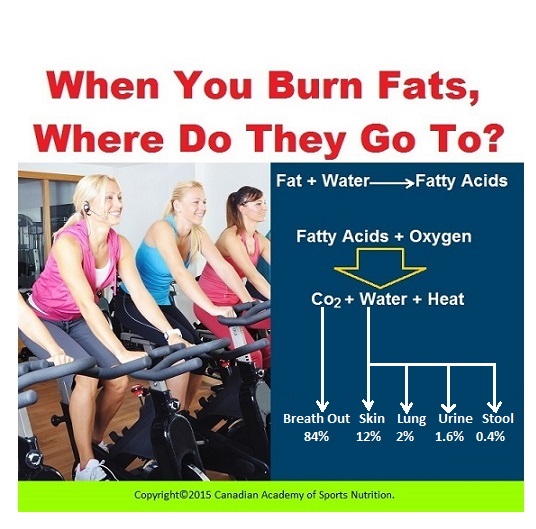Have you ever wondered what happens to those fats when lose weight? It is a common belief that they change into heat and water. Let`s see what really happens to them.
Triglyceride is the stored form of fat in the body. During the metabolism of fat, triglyceride reacts with water and produces glycerol and fatty acids. Glycerol enters into Krebs cycle to generate energy in the form of ATP (see Beta – Oxidation). Fatty acids react with oxygen and produce CO2, water, and heat.
According to a new study by Australian researchers published in the British Medical Journal in December 2014, the body needs 2.9 kg of oxygen to oxidize 1 kg of fat, which generates 2.8 kg of CO2 and 1.1 kg of water. Based on their research, 84% of triglyceride is exhaled as CO2, and 16% becomes water.
Out of 16% water, 12% is excreted by the skin via sweating and evaporation, 2% by the lung, 1.6% through urine, and 0.4% through stool.
As you can see, the lungs are the primary pathway to excrete burned fats, which is totally about 86% (84% as CO2 and 2% as water).
Where does heat or energy come from? One molecule of triglyceride generates 460 ATP (adenosine triphosphate) which after reacting with water generates heat or energy.
Now, you know when you lose weight, you breath out your fats!
Abazar Habibinia, MD, DFN
Executive Director of the Canadian Academy of Sports Nutrition


